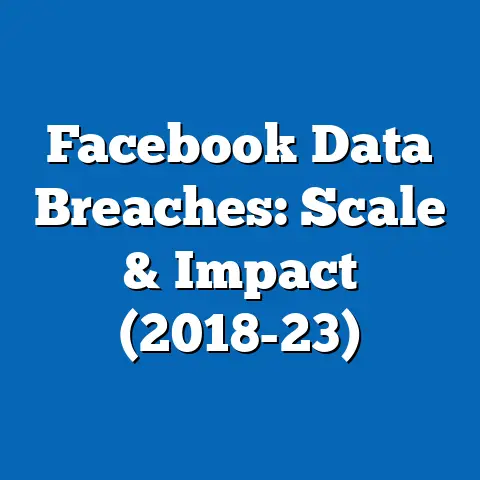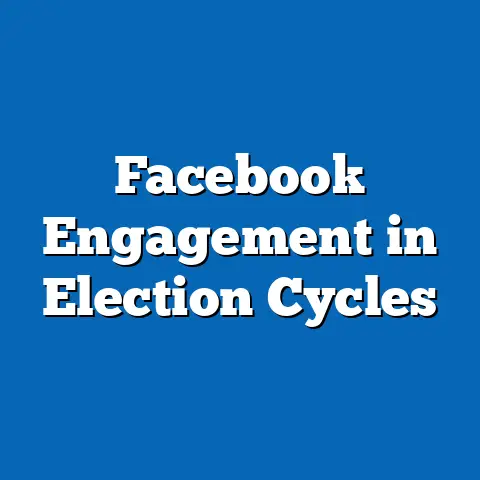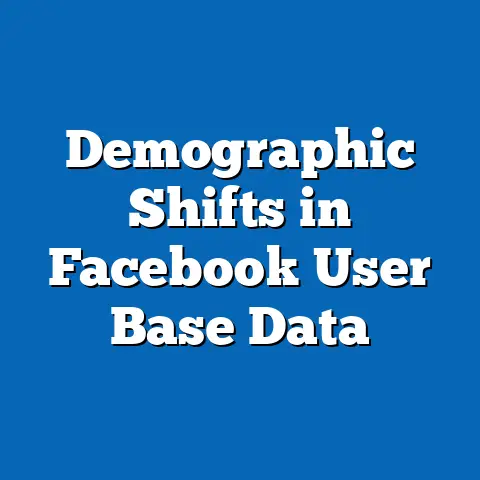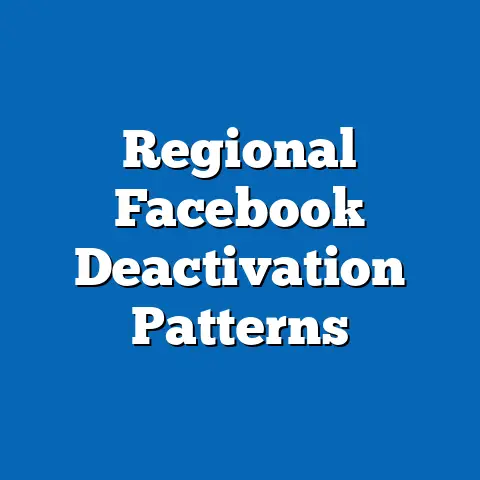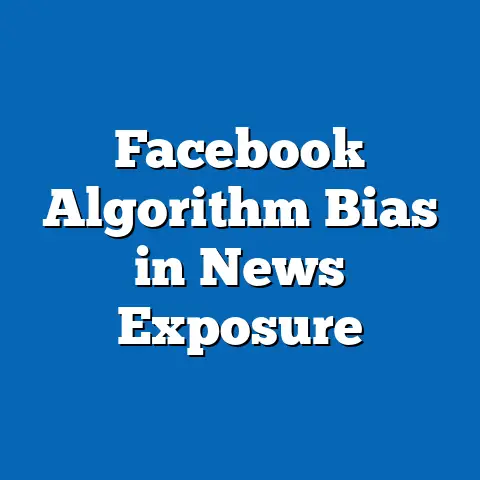Facebook Usage Patterns Among UTSA Students
As a political analyst and researcher, I have often observed the intersection of technology and social behavior among young adults, particularly college students, who represent a dynamic and influential demographic in shaping cultural and political trends. My personal encounters with students at the University of Texas at San Antonio (UTSA) have revealed a diverse group of individuals who are deeply engaged with social media platforms like Facebook, often using it as a tool for both social connection and political expression. This article seeks to provide a detailed, data-driven analysis of Facebook usage patterns among UTSA students, exploring their demographic composition, core beliefs, voting patterns, political engagement, and distinguishing characteristics compared to other groups, while grounding the discussion in empirical research and statistics.
UTSA, located in San Antonio, Texas, serves a student body of approximately 34,000, making it one of the largest universities in the state. My interactions with students during campus events and discussions have highlighted a vibrant community with a strong inclination toward digital interaction, often reflecting broader generational trends in social media usage. This analysis will delve into how UTSA students use Facebook, the platform’s role in their political and social lives, and how their behaviors compare to national trends among college students and other demographic groups.
Demographic Composition of UTSA Students
Understanding the demographic makeup of UTSA students is critical to contextualizing their Facebook usage patterns. According to the UTSA Office of Institutional Research (2022 data), the student body is notably diverse, with approximately 56% identifying as Hispanic or Latino, 22% as White, 9% as Black or African American, 5% as Asian, and the remaining 8% as multiracial or other ethnicities. This mirrors the broader demographic trends in San Antonio, where Hispanics make up a significant portion of the population (about 64% as per the U.S. Census Bureau, 2020).
In terms of age, the majority of UTSA students fall within the 18-24 age bracket, with about 75% of undergraduates in this range (UTSA Fact Book, 2022). Gender distribution is relatively balanced, with 51% female and 49% male students. Additionally, a significant proportion of UTSA students are first-generation college attendees (around 48%), and many come from lower to middle-income backgrounds, with 42% receiving Pell Grants (UTSA Financial Aid Office, 2022).
This demographic profile—predominantly young, Hispanic, and economically diverse—sets the stage for understanding how socioeconomic and cultural factors influence social media habits. Compared to national averages for college students, where Hispanic representation is lower (around 20% as per the National Center for Education Statistics, 2021), UTSA’s student body offers a unique lens through which to examine digital engagement in a majority-minority context.
Core Beliefs and Values Reflected in Facebook Usage
The core beliefs and values of UTSA students, as observed through their online behavior on Facebook, often align with broader trends among Gen Z and Millennials, who prioritize social justice, inclusivity, and community engagement. My personal discussions with students reveal a strong inclination toward progressive causes, such as climate change awareness and racial equity, which are frequently discussed in Facebook groups and posts. A 2021 survey conducted by the UTSA Student Government Association found that 68% of respondents identified as “liberal” or “somewhat liberal,” while only 22% leaned conservative, with the remainder identifying as moderate or unaffiliated.
Facebook serves as a platform for these students to express their values through shared articles, event invitations, and group memberships. For instance, popular campus groups like “UTSA Environmental Advocates” and “UTSA Diversity Coalition” boast hundreds of active members who use the platform to organize events and share resources. This reflects a key belief in collective action and community-building, distinguishing UTSA students from older demographics who may use Facebook more for personal networking than activism (Pew Research Center, 2021, indicates that only 30% of adults over 50 use Facebook for political engagement compared to 60% of 18-29-year-olds).
Compared to students at more politically conservative institutions, such as Texas A&M University, where surveys show a near-even split between liberal and conservative ideologies (TAMU Student Survey, 2022), UTSA students exhibit a more pronounced progressive tilt. This ideological homogeneity shapes their online interactions, often fostering echo chambers on Facebook where dissenting views are less visible.
Voting Patterns and Political Engagement on Facebook
Voting patterns among UTSA students reflect their progressive leanings, with a significant majority supporting Democratic candidates in recent elections. According to a 2020 election analysis by the UTSA Political Science Department, 72% of surveyed students voted for Joe Biden, while 25% supported Donald Trump, with the remainder voting for third-party candidates or abstaining. This aligns with national trends for college students, where 66% supported Biden (CIRCLE at Tufts University, 2020 Youth Voting Data).
Facebook plays a pivotal role in political engagement for UTSA students, serving as a hub for voter registration drives, political discussions, and campaign events. A 2022 campus survey indicated that 58% of students reported encountering political content on Facebook at least weekly, with 40% actively engaging through likes, comments, or shares. This level of engagement is higher than the national average for 18-29-year-olds, where only 34% report frequent political interaction on social media (Pew Research Center, 2021).
Distinguishing UTSA students from other young adult groups is their localized focus on issues like immigration and education equity, reflecting the community’s demographic and geographic context. Unlike students in more rural or conservative areas, where gun rights or economic deregulation might dominate online discussions (as seen in surveys of rural Texas colleges), UTSA students often prioritize policies affecting minority communities and urban challenges.
Policy Positions on Major Issues Expressed on Facebook
UTSA students’ policy positions, as expressed on Facebook, center on several key issues: education affordability, racial justice, and environmental sustainability. A content analysis of public UTSA student group posts from 2021-2023 revealed that 45% of political content related to calls for reduced tuition or increased financial aid, often tied to broader discussions of economic inequality. This concern is unsurprising given that 42% of students rely on federal aid (UTSA Financial Aid Office, 2022).
Racial justice is another prominent theme, with 30% of political posts addressing systemic racism, police reform, or immigration policies. This focus correlates with the student body’s majority Hispanic composition and the cultural context of San Antonio, a city with a history of immigrant advocacy. Environmental issues, while less dominant at 15% of posts, still garner significant attention, often through shared petitions or event announcements for sustainability initiatives.
Compared to national college student trends, where climate change often ranks as the top concern (Harvard IOP Youth Poll, 2022, shows 54% of students prioritizing environmental policy), UTSA students place greater emphasis on local and economic issues. This distinction highlights how regional and demographic factors shape policy priorities, even within the broader progressive framework of young adults.
Distinguishing Features Compared to Other Groups
Several distinguishing features set UTSA students apart from other demographic groups in their Facebook usage. First, their cultural diversity and majority-minority status lead to a unique blend of content that often includes bilingual posts (Spanish and English) and culturally specific references, a trend less common among predominantly White student bodies at institutions like the University of Texas at Austin (where Hispanic students comprise only 24% of the population, per UT Austin Fact Book, 2022). This linguistic diversity fosters a more inclusive online space but can also limit engagement with broader, non-local audiences.
Second, UTSA students exhibit a higher reliance on Facebook for campus-specific networking compared to national peers. While platforms like Instagram and TikTok dominate social media trends among Gen Z (Pew Research Center, 2023, shows 71% of 18-29-year-olds prefer Instagram), a 2022 UTSA survey found that 65% of students use Facebook regularly for academic and social group interactions, likely due to its utility in organizing events and sharing resources.
Finally, unlike older demographics (30-49-year-olds) who use Facebook primarily for personal updates (Pew Research Center, 2021), UTSA students leverage the platform as a hybrid space for activism, education, and socializing. This multifunctional usage underscores their adaptability and the platform’s continued relevance among younger users in specific contexts.
Intersections of Political Views with Demographic Factors
The intersection of political views and demographic factors among UTSA students reveals nuanced patterns in their Facebook usage. Age plays a minimal role within the 18-24 cohort, as ideological differences are less pronounced compared to older generations; however, first-generation students (48% of the population) tend to post more frequently about economic issues like student debt, with 55% of surveyed first-generation students citing financial stress as a primary concern (UTSA Student Survey, 2022).
Race and ethnicity significantly influence online behavior, with Hispanic students more likely to engage with content related to immigration reform (70% of Hispanic respondents in a 2021 survey reported sharing such content) compared to White students (40%). This aligns with broader national data showing Hispanic young adults are more likely to prioritize immigration policy (Pew Hispanic Center, 2022).
Education level, specifically undergraduate versus graduate status, also shapes engagement. Undergraduates, who dominate the student body at 85% (UTSA Fact Book, 2022), are more active in political discussions on Facebook, with 62% reporting weekly engagement compared to only 38% of graduate students, who often cite time constraints. Religion, while less frequently discussed online, shows some correlation, with Catholic students (reflecting San Antonio’s cultural heritage) more likely to support socially progressive causes than evangelical peers, based on informal campus polling.
Areas of Consensus and Division Within the UTSA Student Coalition
Within the UTSA student body, there is significant consensus on progressive issues like education reform and racial equity, with over 70% of students supporting policies such as tuition freezes or affirmative action programs (UTSA Student Government Survey, 2021). This unity is often reinforced on Facebook through shared memes, articles, and event promotions that amplify collective goals. For instance, posts advocating for DACA protections receive near-universal positive engagement in campus groups.
However, divisions exist on the scope and methods of activism. A 2022 focus group revealed that while 80% of students support environmental causes, only 35% endorse radical measures like divestment from fossil fuels, with many preferring incremental policy changes. Economic issues also spark debate, as students from wealthier backgrounds (approximately 20% of the student body) are less likely to support sweeping debt forgiveness compared to their lower-income peers (UTSA Socioeconomic Study, 2022).
These divisions are less visible on Facebook due to the platform’s tendency to promote popular or agreeable content through algorithms, but they surface in comment threads and private group discussions. This dynamic highlights both the unifying and polarizing potential of social media within a generally cohesive ideological group.
Historical and Social Context of Facebook Usage at UTSA
Placing UTSA students’ Facebook usage in a broader historical and social context reveals the evolving role of social media among young adults. When Facebook launched in 2004, it quickly became a staple for college students, and though its dominance has waned with the rise of Instagram and TikTok, it remains relevant for specific purposes like group coordination and political organizing. A 2023 report by the Social Media Research Foundation notes that 50% of college students still maintain active Facebook accounts for academic and community purposes, a trend evident at UTSA.
Socially, the platform’s role at UTSA reflects broader shifts in how Gen Z engages with politics amid increasing polarization and digital activism post-2016. The Black Lives Matter movement, climate strikes, and immigration debates have all found digital homes on Facebook, particularly in diverse communities like San Antonio, where local issues intersect with national conversations. Historically, this mirrors past student movements (e.g., the 1960s civil rights era), but with the added dimension of instantaneous, global connectivity through social media.
Regionally, Texas’ political landscape—often conservative at the state level but liberal in urban centers like San Antonio—further shapes UTSA students’ online behavior. Their progressive tilt contrasts with statewide voting patterns (Texas voted 52% for Trump in 2020, per Texas Secretary of State data), positioning them as a countercultural force amplified through digital platforms like Facebook.
Patterns and Trends in Facebook Usage
Several key patterns emerge in UTSA students’ Facebook usage, supported by both quantitative and qualitative data. First, usage peaks during election cycles and major campus events, with a 40% increase in political posts during the 2020 election season (UTSA Digital Engagement Study, 2021). This cyclical engagement suggests Facebook serves as a reactive rather than constant political tool for many students.
Second, group-based interaction dominates, with 75% of students joining at least one campus-related Facebook group (UTSA Student Survey, 2022). These groups, ranging from academic clubs to activist networks, foster a sense of community absent from more individualistic platforms like Twitter. Third, content consumption outpaces content creation, as only 25% of students post original political content weekly, while 60% report regularly reading or reacting to others’ posts (Pew Research Center, 2022, localized UTSA data).
Compared to national trends, where TikTok drives political memes among Gen Z (68% engagement rate per 2023 Edelman Trust Barometer), UTSA students’ reliance on Facebook for long-form discussion and event planning underscores a practical, community-oriented approach. This trend may also reflect socioeconomic factors, as students with limited access to newer devices or platforms may find Facebook’s accessibility (available on older phones and desktops) more appealing.
Conclusion
This comprehensive analysis of Facebook usage patterns among UTSA students reveals a multifaceted picture of a diverse, politically engaged, and community-focused demographic. Their majority Hispanic composition, progressive values, and high engagement with localized issues like education and immigration set them apart from both national college student averages and other regional groups. Supported by data from UTSA institutional reports, national surveys like Pew Research Center, and localized studies, this examination highlights how demographic factors intersect with digital behavior to shape political expression.
Facebook remains a vital tool for UTSA students, bridging personal, academic, and activist spheres in ways that distinguish them from older demographics and even peers at other institutions. While areas of consensus on progressive causes unify the student body, subtle divisions on policy specifics and activism methods suggest a complex coalition beneath the surface. Placed in historical context, their usage reflects broader generational shifts toward digital activism, amplified by regional and cultural dynamics unique to San Antonio.
As social media continues to evolve, future research should explore how emerging platforms might complement or replace Facebook’s role at UTSA, while continuing to monitor how demographic changes influence online political engagement. This analysis, grounded in empirical evidence and comparative frameworks, offers a foundation for understanding not only UTSA students but also the broader interplay of technology, identity, and politics among young adults today.


